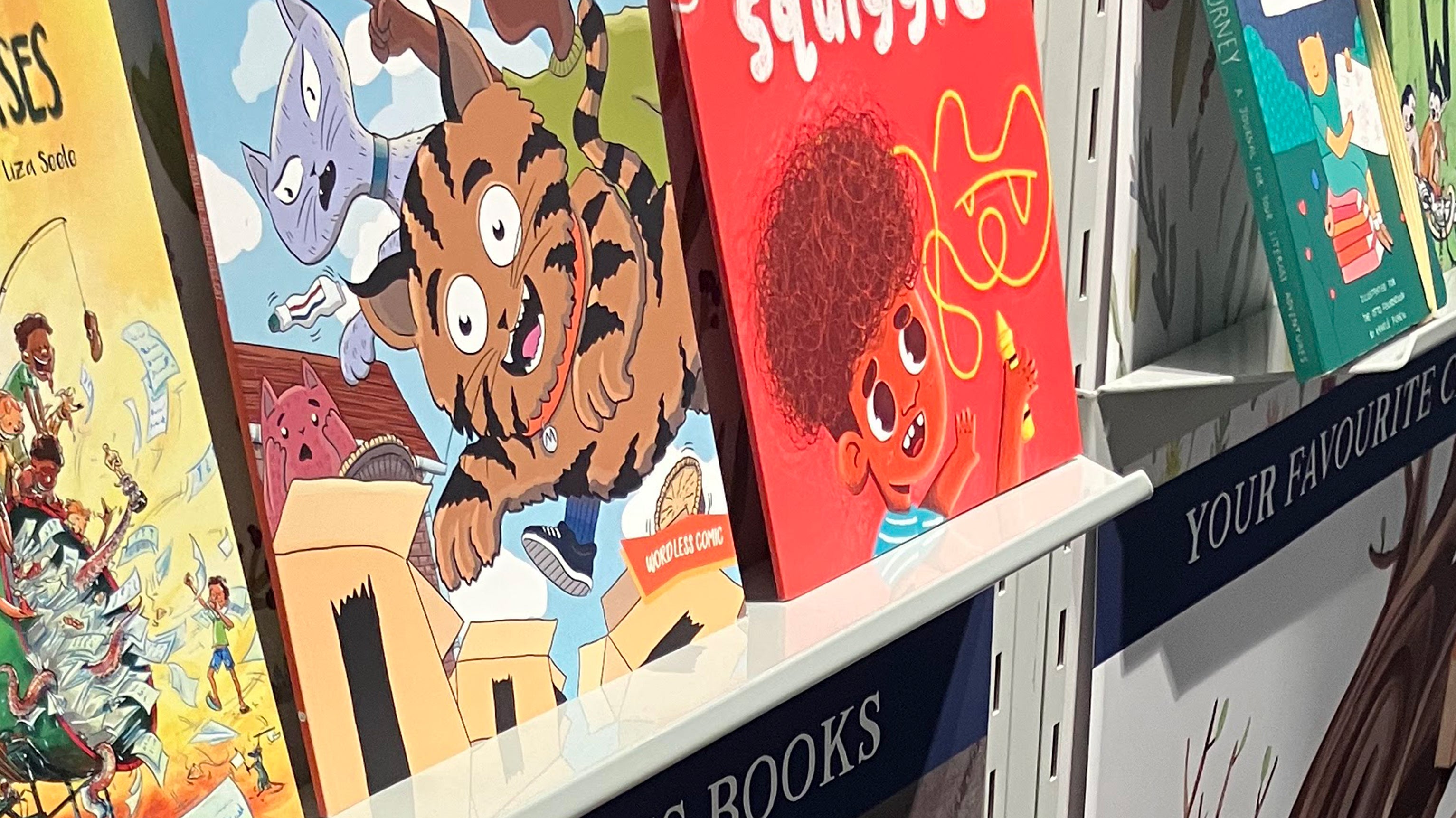As with any art form, writing comes in many shapes and sizes. Writing a novel is nothing like writing a children's picture book, and yet they both come from the same raw creative stuff that writers hold dear.
As a publisher of children's literature, we thought it was a rather smart thing to explain how to write a kids' book based on what books we've enjoyed reading. By no means do we think this is the be-all and end-all! So, perhaps the most schmunderful place to start this conversation is by sitting down with two of our favourite authors.
Writing Tips from Roald Dahl and CS Lewis
Seven tips from Roald Dahl on writing
The Wonderful Story of Henry Sugar and Six More features a short extract called Lucky Break, in which Roald Dahl explains how he came to be a writer, in which he outlined seven very important tips for writers (quoted):
- You should have a lively imagination.
- You should be able to write well. By that I mean you should be able to make a scene come alive in the reader's mind. Not everybody has this ability. It is a gift and you either have it or you don't.
- You must have stamina. In other words, you must be able to stick to what you are doing and never give up, for hour after hour, day after day, week after week and month after month.
- You must be a perfectionist. That means you must never be satisfied with what you have written until you have rewritten it again and again, making it as good as you possibly can.
- You must have strong self-discipline. You are working alone. No one is employing you. No one is around to give you the sack if you don't turn up for work, or to tick you off if you start slacking.
- It helps a lot if you have a keen sense of humour. This is not essential when writing for grown-ups, but for children, it's vital.
- You must have a degree of humility. The writer who thinks that his work is marvellous is heading for trouble.
5 Tips from CS Lewis on writing
Originally published in The Collected Letters of C.S. Lewis, Volume 3: Narnia by HarperOne, CS Lewis here outlines five of his best tips of writing for a young fan (quoted):
- Always try to use language so as to make quite clear what you mean and make sure [your] sentence couldn't mean anything else.
- Always prefer the plain, direct word to the long, vague one. Don't "implement" promises, but "keep" them.
- Never use abstract nouns when concrete ones will do. If you mean "More people died" don't say "Mortality rose."
- Don't use adjectives which merely tell us how you want us to feel about the things you are describing. I mean, instead of telling us a thing was "terrible," describe it so that we'll be terrified. Don't say it was "delightful"; make us say "delightful" when we've read the You see, all those words (horrifying, wonderful, hideous, exquisite) are only like saying to your readers, "Please, will you do my job for me?"
- Don't use words too big for the subject. Don't say "infinitely" when you mean "very"; otherwise you'll have no word left when you want to talk about something really infinite.
How to Write Children’s Picture Books
It’s not a clear-cut science, and we hope it never will be. But many writers would suggest a similar pattern when writing a book that looks something like this:
- Find Your Writer’s Voice
- Understand Your Audience
- Sketch Your Characters
- Craft Your Story
- Read and Edit, Read and Edit
Of course, in this blog we're focusing each step on specifically writing a picture book... but this structure is really the same for most "stories", despite their form.
1. Find Your Writer’s Voice
Don't start by thinking... that's the bane of good writing. Rather, just start by getting those creative juices flowing!
The hardest thing to learn in writing, is what voice you want to write with (who you are as a writer, and what kind of stories you write). So far as finding yourself goes, one way to do it is simply to dive in and hold any expectation of yourself at bay. Write down as much as you can (without editing!), until you find it flowing smoothly and easily, and then try to figure out exactly why it got so smooth and easy. Ask yourself three questions:
- What do you enjoy reading?
- Why do you want to write?
- What do you want to write?
It's best to sit down in your favourite corner of the world (say, beside that lake that's beneath the nearby oak forest, or perhaps atop your apartment block in the city), and then run through these three questions as long and laboured as seems necessary to you.
2. Understand Your Audience
Who are you writing for? Only "children" isn't specific enough. What age-group are you writing for? What are these age-group's interests? What does this age-group currently read? How old are these children's parents?
In many ways, writing a book is like building a business. You've got to have your customer in mind and build the product for them. Sure, writing is an art and so it's naturally cathartic, and you should be writing because you enjoy it. But, if you want to sell books, you have to understand what kind of books your audience wants to buy. Make sure you delve deeply into this by attending other authors' readings and seeing what children react to, noticing what parents pick up in bookshops, and always include a strong sense of humour.
3. Sketch Your Characters
The story in your mind is made up of characters - every story is. These characters are the most important part of your story, and if anything is to give your book life, they are. Give them your full attention.
The key aspect in any character arc is growth. If the character grows at all during the story, you will have naturally formed an arc of some kind for the reader to follow. The reason that you will understand how to grow your characters is because they should always be based on a certain truth from real-life characters.
Every character in your story should be made up of more than superficial traits. Sure, they have strengths and weaknesses, and physical markers that make them unique. But, what unique conflict do they face that troubles their journey? Will they resolve it? What is their relationship to themselves and other characters?
Be sure to flesh your characters out and, if you're an illustrator or happen to be good friends with one, be sure to sketch up concept art of them too. Quite often, we find that once our authors have something to look at, they understand their characters so much more. Read some more on character development here.
4. Craft Your Story
We've searched long and hard through many writers’ essays, letters, lectures and stories to find something that says what we want to convey here. But, to no avail.
All that we found have their own idea of what makes the “best story arc” and very few speak to the bones of what a story can, not should, be built on. That’s why, for this section, we’ve tried to define as little as possible what a story should be, while still revealing the general structure of most celebrated stories (whether novel, short story, picture book or film).
The core structure of most stories consists of the following 5 guidelines:
- Introduction:
- Set the scene by answering at least one or two of the who, what, where, and why questions.
- The Rise:
- Here is where you begin to develop your characters by throwing them into a situation that starts to move the story along a narrative.
- If the conflict wasn’t introduced in the Introduction, it’s usually introduced here.
- The rise usually develops the conflict, making it more meaningful to the characters.
- The Climax:
- This is where your characters are faced with the ongoing conflicts and often fight to resolve it.
- Often described as the turning point of the story, this usually is the highest emotive point of your tale.
- The Fall:
- Allow your reader to rest, and come to terms with new developments or growths that came out of the climax.
- The Resolution:
- This is not where the story ends. The story never ends.
- This is simply where you provide a “satisfying conclusion” that wraps up the conflict experienced within the story.
- Against its definition, the resolution doesn’t need to be uplifting, but it does need to act as a curtain closer to sate the reader’s intrigue.
Most stories hold to each of the 5 guidelines, in sequence, while some end on guideline 4. Others still mix up the structure and try to experiment with the placement of the climax and the fall.
This structure should be treated with extreme artistic license, as no writer ever wrote well by following rules for the sake of them. However, we're yet to read a great story that does not include at least the first 4 guidelines.
5. Read and Edit, Read and Edit
We're not going to belabour the point, but editing is the maker of great stories. Once you're finished your children's book, it's best to let it lie for at least a couple of months before going back to it. You'll need to be slightly detached from it in the editing phase, because you'll likely need to hack away large chunks of text, or replace who pages. We suggest the manuscript goes through at least 2 draft phases before you can be sure it's ready to be sent onto a publisher or an agent.
If you'd like to know more about writing for children, then perhaps your best bet is to sign up for a short course on How to Write a Children's Book.







